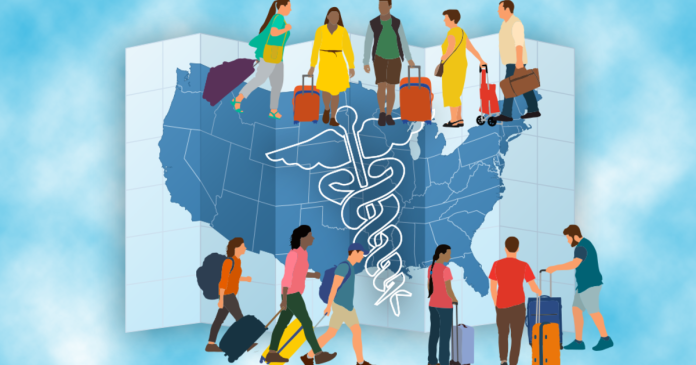Sanford Health, a Sioux Falls, South Dakota-based not-for-profit health system, will continue to expand its operations internationally, said Dr. Luis Garcia, president of Sanford’s clinic division. Sanford said in 2018 that it would expand into Costa Rica, Ireland, New Zealand, South Africa and Vietnam, and those projects are still in the works and on track despite the COVID-19 disruption, a spokesperson said. It operates in nine countries, including China, Germany and Ghana.
Sanford’s international relationships have provided a buffer during the ongoing staffing shortage, allowing it to pull from workforce pipelines around the world while also sending its home residents abroad, Garcia said.
“We have always said that it is important for us to grow our own. For our U.S. residents, it is a plus that they have international experience, but for those that come here it provides an exposure to Sanford culture,” he said. “Even if they can come as locum tenens for two or three months in highly sought medical fields like rheumatology and dermatology, that satisfies the need that we have.”
While health systems’ international footprints helped providers weather staffing shortages, the drop-off in profitable medical tourism revenue drained capital project funding, service improvements and charity care investment, Vequist said. The roughly $200 billion allocated via the COVID-19 Provider Relief Fund has dulled the sting from medical tourism revenue losses, but that funding is waning, economists said.
“It was such a banner year in 2019 for medical tourism and then of course we had this drop-off because of COVID,” said Vequist, who analyzed data from the U.S. Bureau of Economic Analysis, International Trade Administration and Transportation Security Administration. “For hospitals, medical tourism offers wonderful margins since treatment is almost always paid in cash.”
The number of Cleveland Clinic’s inbound international patients treated was cut in half, dropping from 9,150 in 2019 to 4,939 in 2020. Volume rebounded to 7,686 patients in 2021.
“Obviously, the pandemic didn’t do anyone favors as it pertains to travel and healthcare,” said Dr. Curtis Rimmerman, chairman of Cleveland Clinic’s international operations. “We quickly figured out our priority was to take care of domestic COVID patients. But things have settled down and volumes have rebounded significantly in Florida and Northeast Ohio with the reopening of air travel.”
Health systems have steadily increased their marketing budgets targeting overseas patients. Sanford, for instance, recently started a partnership with the Manitoba government in Winnipeg, Canada, where there is a backlog of neurosurgery patients who are being sent to Sanford, Garcia said.
“The idea is, with time, we start strengthening the relationship,” he said. “For us, it is a great opportunity to help out with the backlog that the Canadian government has for certain services.”
Mayo Clinic, Cedars-Sinai, Johns Hopkins Medicine, MD Anderson, Sanford and Cleveland Clinic are among the many health systems that attract patients from the Caribbean, Latin America, Europe, Canada, the Middle East and Central America.
Many Latin American and Caribbean residents travel to Florida for care at Cleveland Clinic’s five-hospital network in the state. The network offers heart, vascular, thoracic, digestive, urology and transplant care to adults and children, Rimmerman said.
“There is a cultural comfort zone for some of these patients (in Florida),” he said.
Cleveland Clinic also has facilities in Toronto, Abu Dhabi and London. The health system opened a 184-bed hospital in central London in March, its second facility in the city.
Sanford looks to help countries like Ghana—where it helped set up the country’s first electronic health record—establish sustainable, quality medical care, Garcia said.
But it may be more expensive to fund international operations due to the pandemic, researchers said.
The cost of international marketing and the complexity of managing foreign consumers has increased dramatically amid COVID-19, Rush Health researchers and medical tourism consultants wrote in a 2021 peer-reviewed paper. The pandemic has been a tipping point for providers to develop more sophisticated telehealth strategies to reach patients abroad, the researchers noted.
While telehealth has expanded rapidly domestically during the pandemic, international restrictions may limit its reach.
“In response to these challenges, academic medical centers will re‐examine their foreign market strategies and those with significant investments in offshore locations will hedge their bets by lowering their exposure in those foreign operations and locations,” the study said.
Neither Cleveland Clinic nor Sanford plans to slow their international expansion plans or outreach to draw medical tourists, executives said.
“We’re anticipating an increase over the next five years of international patient volumes,” Rimmerman said. “Our goals from the international perspective are robust.”













